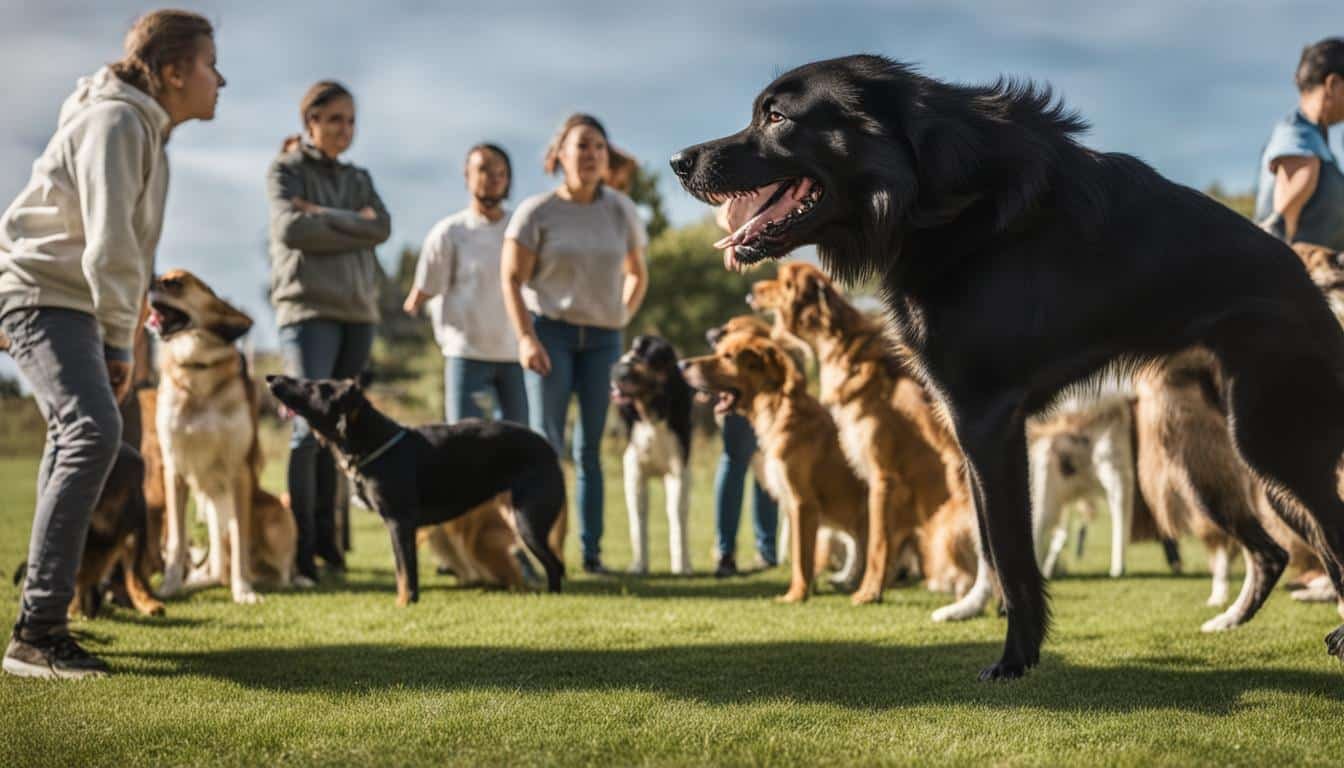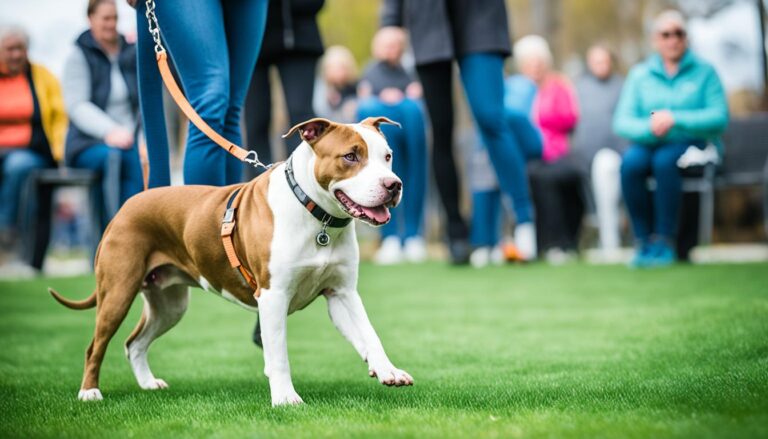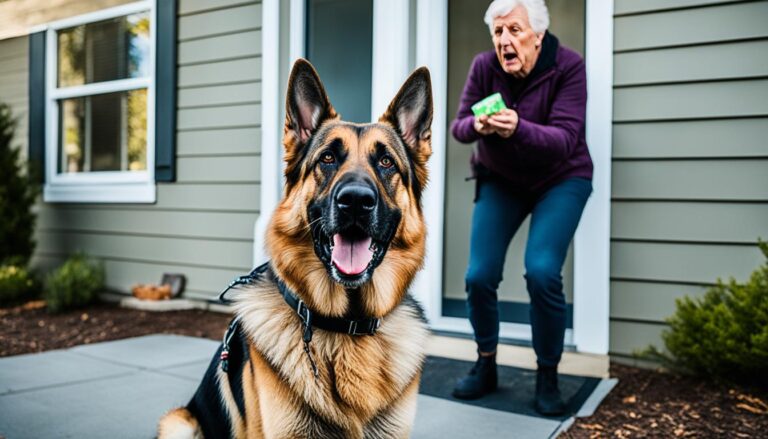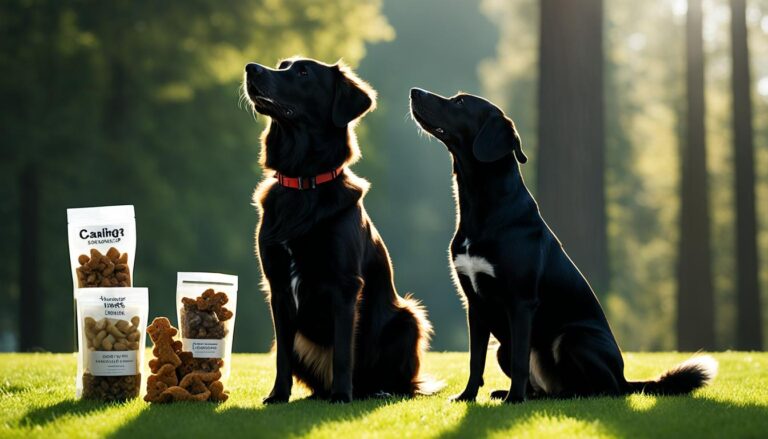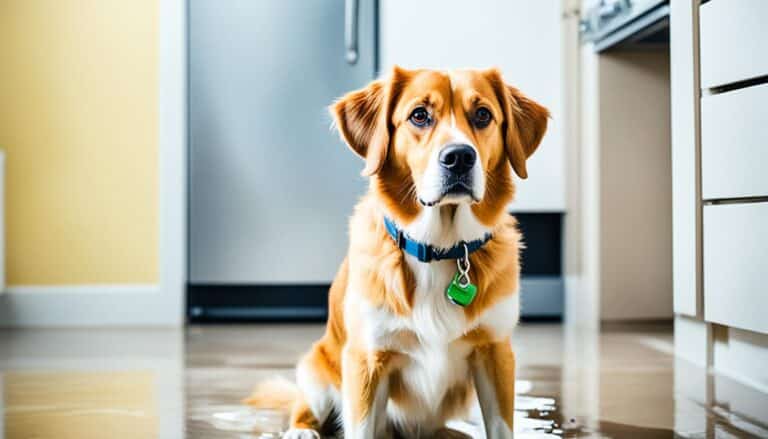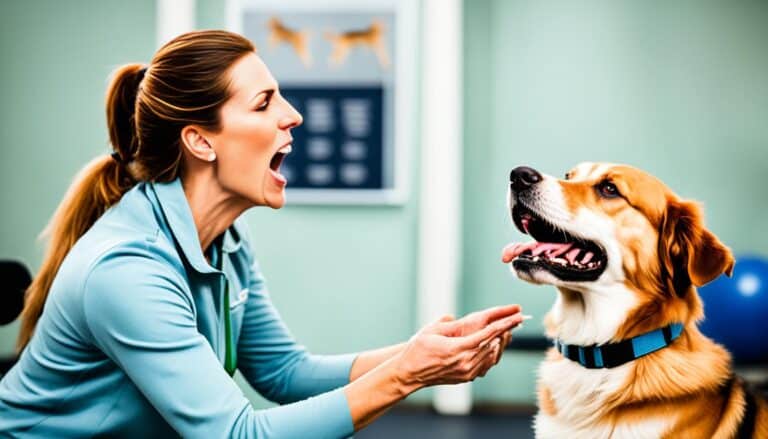How to Train an Aggressive Dog with Other Dogs
Are you struggling with an aggressive dog who just can’t seem to get along with other dogs? It can be a challenging and worrisome experience, but you’re not alone. Many dog owners face the same issue and are searching for solutions. The good news is that with the right training techniques and management strategies, you can help your dog overcome their aggression and develop safe and positive interactions with other dogs.
Picture this: you’re taking your dog for a walk in the park, hoping for a peaceful and enjoyable outing. But as soon as your furry friend spots another dog approaching, their hackles rise, their teeth bare, and they start growling and lunging. It’s a heart-wrenching situation that can make you feel frustrated, embarrassed, and even scared for your dog’s well-being.
But don’t lose hope. Your dog’s aggressive behavior can be addressed and improved. In this article, we’ll explore effective training techniques, expert tips, and proven strategies for managing dog aggression. Whether your pup is displaying signs of territorial aggression, fear aggression, or any other type of aggressive behavior, we’ve got you covered.
Before we dive into the training methods, let’s take a closer look at the underlying causes of dog aggression. Understanding the root of the problem is crucial for implementing the right approach to help your dog become a happier and more sociable companion. Are you ready to embark on this transformative journey with your furry friend? Let’s get started!
Why Does a Dog Become Aggressive Towards Other Dogs?
Dealing with aggressive behavior in dogs can be a concerning and challenging issue for dog owners. Understanding the causes of dog aggression is crucial for effective training and managing this behavior. There are several reasons why a dog may become aggressive towards other dogs.
- A lack of proper socialization: Dogs that haven’t been exposed to other dogs and different environments during their critical socialization period may develop fear or aggression towards unfamiliar canines.
- Past traumatic experiences: Dogs that have been involved in previous altercations or negative interactions with other dogs may develop fear, anxiety, or aggression as a defense mechanism.
- Fear and anxiety: Dogs may become aggressive towards other dogs as a result of fear or anxiety. They may perceive other dogs as threats and resort to aggression as a means of self-defense.
- Pain or discomfort: Dogs in pain or discomfort may display aggression towards other dogs as a reaction to their physical discomfort.
- Need for dominance: Some dogs may exhibit aggression towards other dogs as a way to assert their dominance and establish hierarchy.
Understanding the underlying cause of your dog’s aggression towards other dogs is essential in developing a tailored training plan. It’s important to consult with a professional dog trainer or behaviorist who can help assess the situation and provide guidance on managing and modifying your dog’s aggressive behavior.
Continued socialization and training are key in addressing aggressive behavior in dogs and enabling them to interact safely with other dogs. The next section will provide tips and techniques for training an aggressive dog to interact positively with their canine counterparts.
Tips for Training an Aggressive Dog to Interact with Other Dogs
To train an aggressive dog to interact with other dogs, socialization is key. By gradually exposing your dog to different people and animals, you can help them become more comfortable in social situations. Here are some methods for handling dog aggression and promoting positive interactions:
- Start with positive experiences: Begin by introducing your dog to other dogs in a controlled environment. Choose friendly and well-behaved dogs to ensure a positive experience. Reward your dog with treats and praise for calm and relaxed behavior.
- Don’t force interactions: It’s important to respect your dog’s boundaries. If your dog shows signs of discomfort or aggression, such as growling or lunging, give them space and remove them from the situation. Pushing your dog into interactions they’re not ready for can make the aggression worse.
- Be consistent: Establish clear commands and expectations for your dog during interactions. Use positive reinforcement training techniques to reward desired behavior. Consistency is key in helping your dog understand what is expected of them.
- Manage the environment: Set your dog up for success by managing their environment. Keep them on a leash during introductions and gradually increase the duration of the interactions. Choose neutral territory for meetings, such as a park, to prevent territorial behaviors.
- Seek professional help if needed: If your dog’s aggression persists or worsens despite your efforts, it’s crucial to seek assistance from a certified dog trainer or behaviorist. They can provide specialized guidance and create a tailored training plan for your dog.
Remember, training an aggressive dog to interact with other dogs takes time and patience. Consistently applying these methods and seeking professional guidance will increase the chances of successful socialization.

Can a Reactive Dog Be Cured?
When it comes to dog aggression, a common question that pet owners have is whether a reactive dog can be cured. While there is no definitive cure for dog aggression, there is hope for managing and reducing aggressive behavior through proper training and management strategies.
Aggression rehabilitation for dogs is a process that aims to teach dogs alternative behaviors and help them become more comfortable and less reactive in certain situations. By working with a certified trainer or behaviorist, you can develop a personalized training plan that focuses on addressing your dog’s specific needs and triggers.
One of the key aspects of curing dog aggression is understanding the underlying causes. It’s important to identify any past traumatic experiences, fear or anxiety triggers, or dominance issues that may contribute to the aggression. With this knowledge, you can implement targeted training techniques to help your dog overcome their aggressive tendencies.
During the rehabilitation process, it’s crucial to be patient and consistent. Rome wasn’t built in a day, and the same applies to curing dog aggression. Positive reinforcement techniques, such as rewards for good behavior, can be highly effective in reshaping your dog’s responses to triggers. Remember, it’s important to use rewards that are meaningful and motivating for your dog, whether it’s treats, praise, or playtime.
Key Strategies for Curing Dog Aggression:
- Positive Reinforcement: Rewarding good behavior and redirecting your dog’s attention to positive activities can help reduce aggression.
- Desensitization and Counter-Conditioning: Gradually exposing your dog to their triggers in a controlled manner can help them overcome their fears and anxieties.
- Consistency and Repetition: Maintaining a consistent training routine and repeating exercises regularly will reinforce the desired behaviors.
- Management Techniques: Implementing management strategies, such as using a muzzle or leash, can help prevent situations that may trigger aggressive behaviors.
- Seeking Professional Help: Enlisting the assistance of a certified trainer or behaviorist can provide expert guidance and support throughout the rehabilitation process.
Remember, every dog is unique, and the road to curing dog aggression may take time and patience. By staying committed to the process and seeking professional help when needed, you can improve your dog’s behavior and create a safer and happier environment for both your furry friend and yourself.

Different Types of Dog Aggression
When it comes to dog aggression, it’s essential to understand that it can manifest in different ways and be caused by various factors. By recognizing the specific type of aggression your dog exhibits, you can tailor your training approach accordingly and address the root cause of the problem.
Here are three common types of aggression in dogs:
- Territorial Aggression: This type of aggression occurs when dogs feel the need to protect their territory from intruders, whether it’s their home, yard, or even their favorite toy. Signs of territorial aggression include growling, barking, lunging, and biting. It’s important to establish clear boundaries and teach your dog proper socialization skills to manage this type of aggression.
- Fear Aggression: Dogs may exhibit fear aggression when they feel threatened or afraid. This can result from a lack of socialization, past traumatic experiences, or specific triggers that trigger anxiety. Signs of fear aggression include cowering, trembling, growling, snapping, and biting. It’s crucial to create a safe and positive environment for your dog, gradually exposing them to fearful situations through controlled desensitization and counter-conditioning techniques.
- Predatory Aggression: Some dogs may display predatory aggression, which is instinctual and often triggered by their prey drive. This type of aggression is commonly directed towards smaller animals or inanimate objects that resemble prey. Signs of predatory aggression include stalking, chasing, and pouncing. Proper management, training, and redirection can help control this instinctual behavior.
Understanding the type of aggression your dog exhibits is the first step in addressing the issue effectively. If you’re uncertain or struggling to manage your dog’s aggressive behavior, consult a professional dog trainer or behaviorist who can provide expert guidance tailored to your dog’s specific needs.
Signs of Dog Aggression
Recognizing the signs of aggressive behavior in dogs is crucial for early intervention and training. By understanding these warning signs, you can take appropriate steps to address and manage your dog’s aggression. Here are some common signs to watch out for:
- Growling: A dog may growl when it feels threatened or uncomfortable. It’s a clear warning sign that aggression may escalate if the situation doesn’t change.
- Snapping: Snapping or showing teeth is a defensive behavior that dogs display to assert dominance or protect themselves.
- Lunging: Dogs may lunge forward aggressively, attempting to make contact with their target. This behavior often accompanies growling or a hostile posture.
- Barking: Excessive barking, particularly with an aggressive tone, can indicate that a dog is feeling threatened or agitated.
When you observe any of these signs in your dog’s behavior, it’s important to address the underlying cause and seek professional help if necessary. Remember, aggression in dogs can be dangerous and should be taken seriously.
“Knowing the warning signs of dog aggression can help owners provide early intervention and prevent any potential harm.”
Treating Dog Aggression
If you are dealing with a dog displaying aggressive behavior, it’s essential to address the issue and seek appropriate treatment. Treating dog aggression involves a combination of techniques that aim to modify their behavior and create a safer and more harmonious environment for both your dog and those around them.
Avoiding Triggers
One of the first steps in aggression treatment for dogs is to identify and avoid triggers that provoke aggressive behavior. These triggers can vary from certain sights or sounds to specific situations or interactions. By removing these triggers from your dog’s environment or managing their exposure to them, you can help reduce the likelihood of aggressive responses.
“Nothing in Life Is Free” Program
Implementing a “nothing in life is free” program can be an effective approach to behavior modification for dog aggression. This program involves teaching your dog that they must earn rewards, such as treats or playtime, by following commands or displaying non-aggressive behavior. By establishing yourself as the leader and setting clear expectations, you can reinforce positive behavior and discourage aggression.
Desensitization and Counter-Conditioning
Desensitization and counter-conditioning are techniques commonly used in aggression treatment for dogs. These methods involve gradually exposing your dog to the triggers that provoke aggressive behavior, starting at a level where they can remain calm and relaxed. Over time, through positive reinforcement and rewarding calm behavior, you can help your dog develop a more positive association with these triggers and reduce their aggressive responses.
Medication
In some cases, medication may be prescribed by a veterinarian as part of the treatment plan for dog aggression. Medication can help manage underlying anxiety or fear that contributes to aggressive behavior, making it easier for behavior modification techniques to succeed. It’s important to consult with a professional to determine the appropriate medication and dosage for your dog.
Consistency and patience are key when it comes to treating dog aggression. It’s essential to work closely with a certified professional trainer or behaviorist who can guide you through the process and tailor the treatment plan to your dog’s specific needs. With the right approach, dedication, and proper treatment, you can help your dog overcome their aggression and build a healthier and happier relationship.
Ensuring Safety in a Household with Aggressive Dogs
If you have aggressive dogs in your household, it’s crucial to prioritize safety for both your dogs and yourself. Taking proper safety precautions can help prevent dog fights and create a peaceful environment. Here are some steps you can take to ensure the safety of everyone involved.
Firstly, it’s important to avoid triggers that may provoke aggressive behavior in your dogs. Identify the specific situations, objects, or interactions that trigger aggression and try to minimize or eliminate their presence in your household. This may include keeping certain toys or food separate, avoiding crowded or tense environments, or providing individual spaces for your dogs.
Using head collars and muzzles can be an effective tool to minimize the risk of dog fights. Head collars provide better control and can help redirect your dog’s attention, while muzzles help prevent injuries during potential conflicts. However, it’s crucial to ensure the correct fit and introduce these tools gradually, making sure your dogs are comfortable and not experiencing any discomfort.
When necessary, separate your dogs to prevent any potential fights or conflicts. Use gates or crates to create separate areas where each dog can have their own space. This allows for controlled interactions and reduces the risk of aggressive behaviors. Remember, the safety of your dogs and yourself should always be the top priority.
